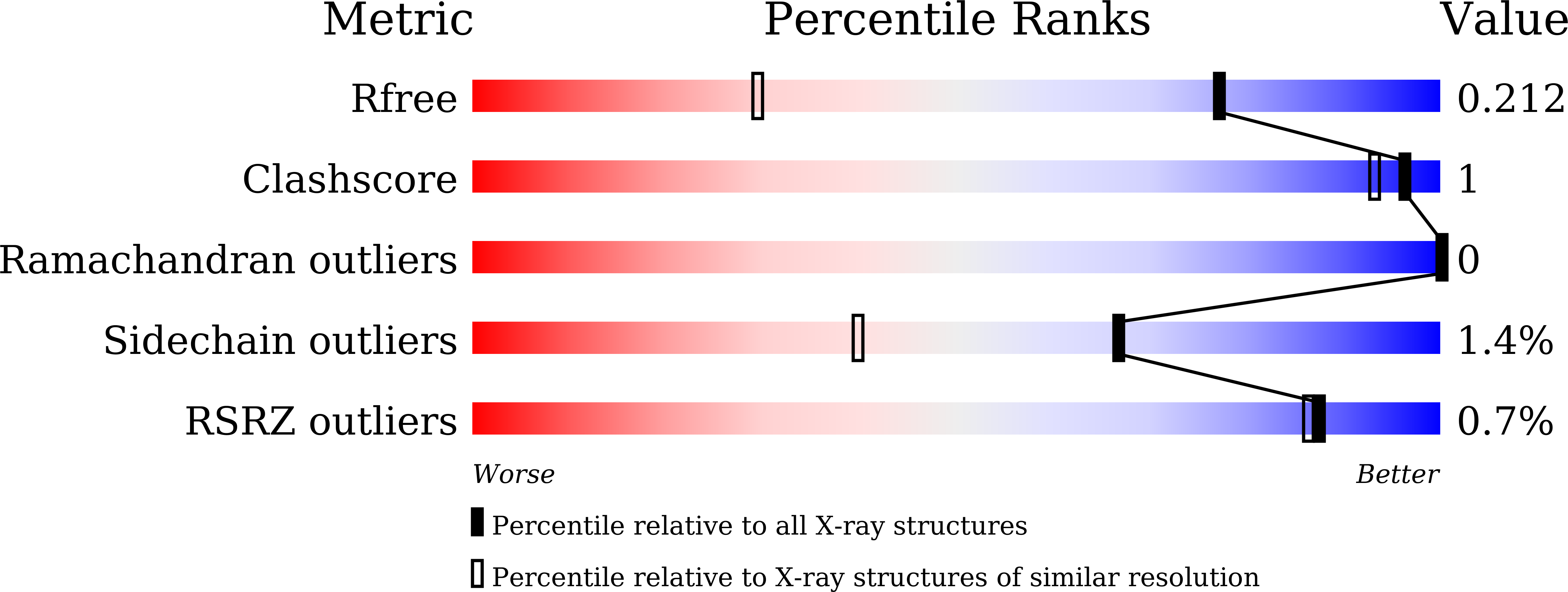Structural and functional analysis of gum arabic l-rhamnose-alpha-1,4-d-glucuronate lyase establishes a novel polysaccharide lyase family.
Kondo, T., Kichijo, M., Maruta, A., Nakaya, M., Takenaka, S., Arakawa, T., Fushinobu, S., Sakamoto, T.(2021) J Biol Chem 297: 101001-101001
- PubMed: 34303708
- DOI: https://doi.org/10.1016/j.jbc.2021.101001
- Primary Citation of Related Structures:
7ESK, 7ESL, 7ESM, 7ESN - PubMed Abstract:
Gum arabic (GA) is widely used as an emulsion stabilizer and coating in several industrial applications, such as foods and pharmaceuticals. GA contains a complex carbohydrate moiety, and the nonreducing ends of the side chains are often capped with l-rhamnose; thus, enzymes that can remove these caps are promising tools for the structural analysis of the carbohydrates comprising GA. In this study, GA-specific l-rhamnose-α-1,4-d-glucuronate lyase from the fungus Fusarium oxysporum 12S (FoRham1) was cloned and characterized. FoRham1 showed the highest amino acid sequence similarity with enzymes belonging to the glycoside hydrolase family 145; however, the catalytic residue on the posterior pocket of the β-propeller fold protein was not conserved. The catalytic residues of FoRham1 were instead conserved with ulvan lyases belonging to polysaccharide lyase family 24. Kinetic analysis showed that FoRham1 has the highest catalytic efficiency for the substrate α-l-rhamnose-(1→4)-d-glucuronic acid. The crystal structures of ligand-free and α-l-rhamnose-(1→4)-d-glucuronic acid -bound FoRham1 were determined, and the active site was identified on the anterior side of the β-propeller. The three-dimensional structure of the active site and mutagenesis analysis revealed the detailed catalytic mechanism of FoRham1. Our findings offer a new enzymatic tool for the further analysis of the GA carbohydrate structure and for elucidating its physiological functions in plants. Based on these results, we renamed glycoside hydrolase family 145 as a new polysaccharide lyase family 42, in which FoRham1 is included.
Organizational Affiliation:
Graduate School of Life and Environmental Sciences, Osaka Prefecture University, Osaka, Japan.


















